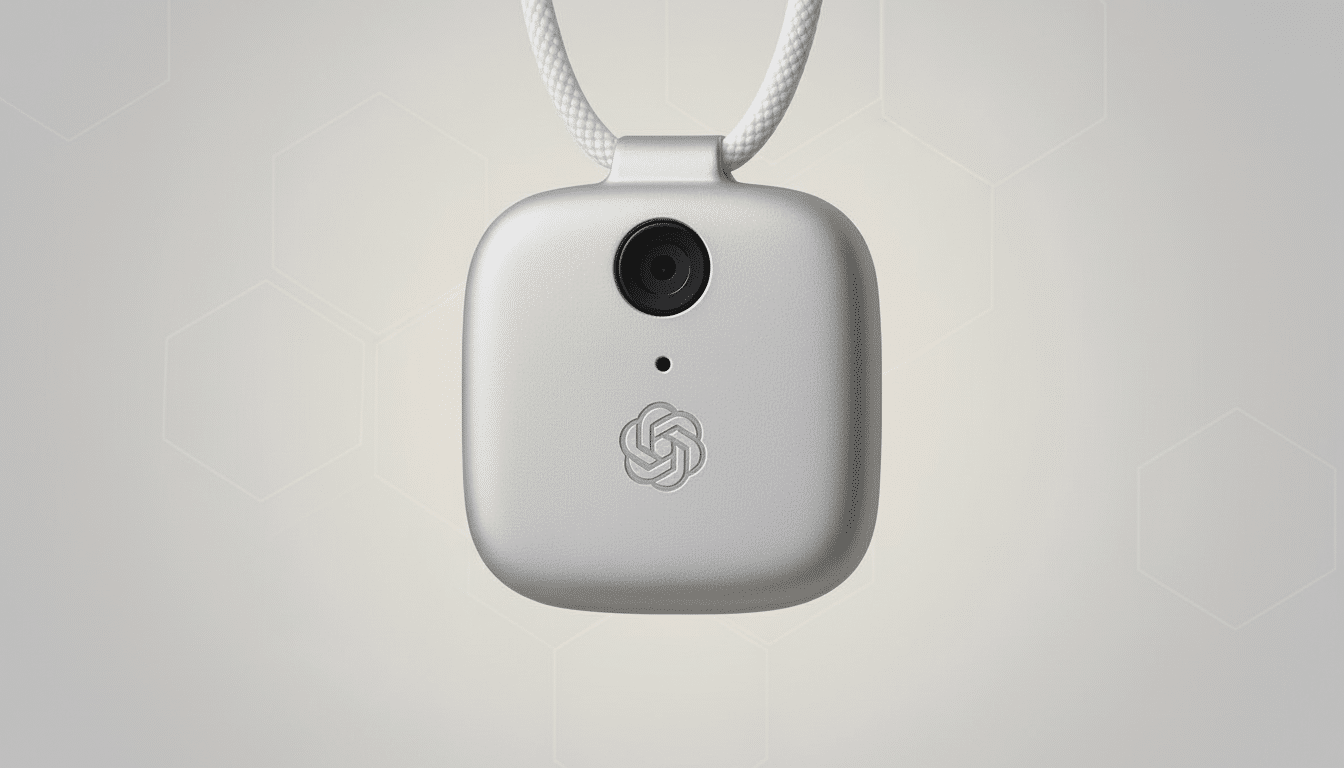OpenAI’s much-hyped hardware effort with design legend Jony Ive is said to be slipping, due in part to internal battles around software, compute and product definition that are pushing out the launch schedule. Sources who spoke to the Financial Times describe a palm-sized companion device with a minimal screen that uses only cameras and microphones to interpret people and places around it: a bold wager on ambient AI that has so far proved tougher to realise than anyone hoped.
Why the OpenAI–Ive AI device launch is being delayed
Those who work on the project said the team is still grappling with fundamental decisions including what runs on device and what’s stored in the cloud; when an assistant should know about you versus when it’s just too much; and how to package that all into a form factor beyond mere novelty. The FT writes of internal discussion about the product’s “personality,” with OpenAI looking to create a friendly companion that steers clear of the eerie tone that has turned off people from other AI agents.

And that tension is more than just cosmetic. Voice-first assistants are won or lost by their dependence on reliability, latency and trust. A device that mishears, hallucinates or delays while ramming traffic into the network is going to lose users in a hurry. Designing a minimal interface within those constraints is a classic Ive challenge — shaving away friction while maintaining control — but it requires a mature software stack that ambient AI hardware has yet to prove at scale.
Compute and cost bottlenecks challenge viable launch
Even if you nail the user experience, the economics are tough. Contemporary large language models are compute-hungry, and (at least on the margins) it’s not just training but also inference that drives recurring costs. Industry analysts have reported that operating flagship chat services today costs billions of dollars per year, and this cost increases due to dramatically growing user bases, which creates increasingly multimodal workloads.
The wider market isn’t helping. High-end AI accelerators continue to be supply-constrained with data center demand surpassing buildout of power and cooling. Companies including Apple and Google have responded by doing more on the device — think of Apple’s on-device model work and Google’s lightweight assistant offerings — in an effort to reduce server calls, save cost and improve privacy. We believe that determining the ratio of local processing and cloud inference for a new stand-alone device is an important nontrivial decision.
Privacy and design trade-offs complicate ambient AI
Always-listening and always-watching devices are a privacy nightmare waiting to happen. Previous dust-ups around smart speakers saving voice recordings and smart displays turning on without warning illustrate just how fast consumer trust can disappear. Regulators are paying attention as well, and the spotlight is shining on biometric data, children’s privacy and dark patterns.
For such an ambient assistant to succeed would require transparent controls, clear boundaries for the data it collects and stores, and credible on-device safeguards against unauthorized data access. That entails visible cues for capture, strong consent flows, and a privacy model that functions even when connectivity is poor. Design language is how the designers communicate that safety without making their product look like a giant blinking warning light — a balance so subtle, it can stretch months into development.

A cautionary market after high-profile early misfires
The bar now is higher, in part because the early entrants have faltered. Humane’s AI Pin was beset by battery life, thermal limitations and consistency problems — a testament to the challenge of pushing an assistant built around the cloud into a wearable. Rabbit’s R1 turned to software after its hardware buzz fizzled. Meanwhile, Meta’s Ray-Ban smart glasses have demonstrated that lightweight, everyday form factors — with clear use cases — can generate momentum, particularly when combined with a large ecosystem.
If the OpenAI–Ive device is pushed forward to a later window of time, it intersects with an ecosystem of far stronger on-device NPUs and incumbents who have deeply integrated generative capabilities into their phones, glasses and PCs. That ups the ante: The product will need to offer a step-change experience — rather than merely a repackaged chatbot — if it is to justify having its own dedicated hardware.
Key signals to watch as the device inches toward launch
Three milestones will indicate how close the team is to an actual launch.
- Silicon choices — whether to partner for a mature mobile platform or pursue custom compute — will set the power, latency and cost ambitions.
- Software scope — outlining what runs locally and how the device behaves when offline — would indicate a focused product vision.
- Trust architecture — privacy disclosures, safety guardrails and third-party reviews — will be essential to overcoming skepticism around ambient sensing.
The Financial Times article highlights a more general truth about the AI hardware race: the frontier is not just model quality, it’s end-to-end systems engineering. Converting cutting-edge models into trustworthy everyday companions involves grappling with the messy middle — compute budgets, privacy by design and human-centered interfaces. If those pieces aren’t in place and ready, a delay is less a setback than an obligatory recalibration.
OpenAI has previously pursued custom chips and splashy partnerships to twist the cost curve. That ambition channeled through Ive’s design ethos could still produce a category-defining product — just not by the earliest time frame. In a market recently reminded that flashy demos are easy and resilient products are hard, perhaps the smartest feature to ship first is patience.

